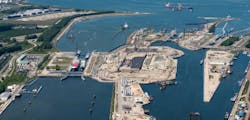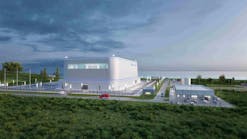NOAA, ASCE and Maryland university collaborating on new climate codes for $1.3T infrastructure market
Three entities which are expert in climate, engineering and education will work together to accelerate development of new codes and standards for future U.S. infrastructure design and construction.
The National Oceanic and Atmospheric Administration (NOAA) Climate Program Office announced the partnership this week with the University of Maryland Center for Technology and Systems Management and the American Society of Civil Engineers. The three will collaborate on helping builders account for climate change in building codes, design and construction.
The U.S. invests an estimated $1.3 trillion annually in the design, construction, and maintenance of homes, businesses, transportation systems, industrial centers, and other components of the built environment, according to a 2020 U.S. Census Bureau report. This sector provides millions of jobs, including more than seven million jobs in construction alone as of the May 2020 report by the U.S. Bureau of Labor.
Energy efficiency and sustainability are also key parts of the current and future infrastructure building planning in the U.S. and abroad—especially as the climate gets warmer.
The nearly 130 million residential and commercial buildings in the U.S. collectively cost more than $400 billion annually to heat, cool, light and power, according to federal statistics.
“This partnership can help us accelerate the move toward more climate-resilient infrastructure for the nation and globally,” said Rick Spinrad, Ph.D., NOAA administrator. “Our goal is to bring climate information into the nation’s standard-setting process to increase the pace of climate adaptation and reduce design, construction and maintenance costs as well as the costs of climate-related natural disasters.”
The collaboration will advance the use of NOAA-produced climate science and understanding within engineering practice for the design and construction of climate-resilient infrastructure, through developing and updating ASCE codes and standards. The partnership calls for a series of exchanges between NOAA and ASCE, which will be facilitated by the UMD Center for Technology and Systems Management.
“ASCE fully supports the partnership with NOAA and the university,” said Tom Smith, Executive Director of ASCE. “The results will be of critical importance in supporting the development of standards for resilient infrastructure nationally and globally.”
Earlier this year, Energy Secretary Jennifer Granholm announced new DOE building energy code determinations that are projected to save nearly $140 billion over 30 years and and some 900 million metric tons of avoided CO2 emissions annually.
DOE’s analysis of the updated building codes indicated energy savings of 4.7% for commercial buildings and 9.4% for residential buildings compared to the previous editions of the model energy code.





